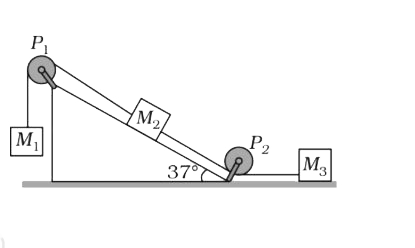The stoichiometric coefficients do not represent
relative number of molecules of the rectants and products
relative number of moles of the reactants and products
relative volumes of each gaseous rectant and product under the indentical condtions of temperature and pressure
the relative mass of rectants and products
The correct Answer is:D
1 mol is a fixed number of formula units but not a fixed mass.
Topper's Solved these Questions
- SOME BASIC CONCEPTS OF CHEMISTRYBOOK - R SHARMACHAPTER - SOME BASIC CONCEPTS OF CHEMISTRYEXERCISE - Follow-up Test 20
2 Videos
- SOME BASIC CONCEPTS OF CHEMISTRYBOOK - R SHARMACHAPTER - SOME BASIC CONCEPTS OF CHEMISTRYEXERCISE - Follow-up Test 21
7 Videos
- SOME BASIC CONCEPTS OF CHEMISTRYBOOK - R SHARMACHAPTER - SOME BASIC CONCEPTS OF CHEMISTRYEXERCISE - Follow-up Test 18
2 Videos
- REDOX REACTIONSBOOK - R SHARMACHAPTER - REDOX REACTIONSEXERCISE - Archives
29 Videos
- STATES OF MATTERBOOK - R SHARMACHAPTER - STATES OF MATTEREXERCISE - ARCHIVES
41 Videos
Similar Questions
Assertion : In rate law, unlike in the expression for equilibrium constants, the exponents for concentration do not necessarily match the stoichiometric coefficients.
Reason : It is the mechanism and not the balanced chemical equation for the overall change that governs the reaction rate.
View SolutionMasses M1,M2 and M3 are connected by strings of negligible mass which pass over massless and frictionless pulleys P1 and P2 as shown in the figure. The masses move such that the portion of the string betweenP1 and P2 is parallel to the inclined plane and the portion of the string between P2 and M3 is horizontal. The masses M2 and M3 are 4.0 kg each and the coefficient of kinetic friction between both the masses and the surfaces is 0.25. The inclined plane makes an angle of 37° with the horizontal. If the mass M1 moves downwards with a uniform velocity, find
(i) the mass of M1 in kg
(ii) the tension in the horizontal portion of the string in Newton

View Solution
Knowledge Check
Assertion (A) Order and molecularity are same.
Reason (R) Order is determined experimentally and molecularity is the sum of the stoichiometric coefficient of rate determining elementary step.ABoth assertion and reason are correct and the reason is correct explananation of assertion.BBoth assertion and reason are correct but reason does not explain assertion.CAssertion is correct but reason is incorrect.DAssertion is incorrect but reason is correct.Assertion : In rate law, unlike in the expression for equilibrium constants, the exponents for concentration do not necessarily match the stoichiometric coefficients.
Reason : It is the mechanism and not the balanced chemical equation for the overall change that governs the reaction rate.AIf both assertion and reason are true and reason is the correct explanation of assertionBIf both assertion and reason are true but reason is not the correct explanation of assertionCIf assertion is true but reason is falseDIf both assertion and reason are false.What is the stoichiometric coefficient fo Ca in the reaction ?
Ca+Al3+→Ca2++AlA2B1C3D4
In the reaction :
Zn+NaNO3+NaOH→Na2ZnO2+A+H2O
The sum of stoichiometric coefficients of Zn and A in the balanced reaction with simplest integer coefficient is
View SolutionAssertion (A) Order and molecularity are same.
Reason (R) Order is determined experimentally and molecularity is the sum of the stoichiometric coefficient of rate determining elementary step.
View SolutionWhat is the stoichiometric coefficient fo Ca in the reaction ?
Ca+Al3+→Ca2++Al
View SolutionThe following redox reaction occurs in basic medium NO−3Zn(s)→Zn2++NH+4 when the above reaction is balanced such that the stoichiometric coefficients are in smallest whole number ratio, then the difference of stoichiometric coefficient of Zn (s) and OH− ion will be:
View SolutionAssertion (A) Order and molecularity are same.
Reason (R) Order is determined experimentally and molecularity is the sum of the stoichiometric coefficient of rate determining elementary step.
View Solution
